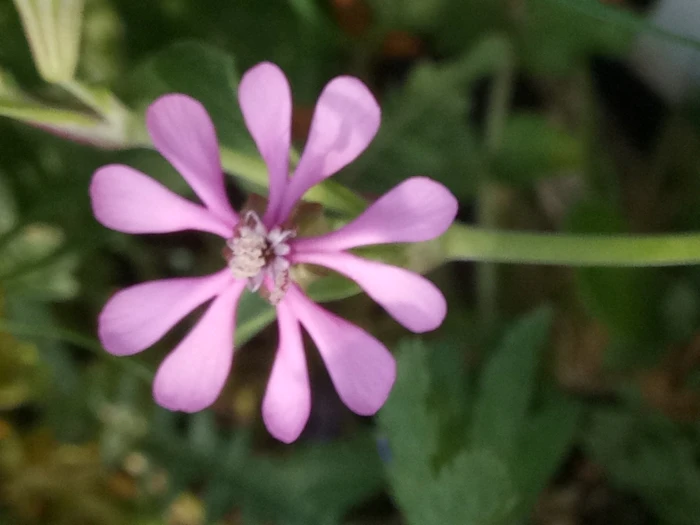One-Sided Catchfly
(Silene secundiflora)
One-Sided Catchfly (Silene secundiflora)
/
/

Karim Haddad
CC BY 4.0
Image By:
Karim Haddad
Recorded By:
Copyright:
CC BY 4.0
Copyright Notice:
Photo by: Karim Haddad | License Type: CC BY 4.0 | License URL: http://creativecommons.org/licenses/by/4.0/ | Rights Holder: Karim Haddad | Publisher: iNaturalist | Date Created: 2021-03-06T11:59:04-08:00 |

























Estimated Native Range
Climate Requirements
| • Precipitation | 14" - 17" |
| • High Temp. | 85°F - 90°F |
| • Low Temp. | 33°F - 43°F |
Summary
Silene secundiflora, commonly known as the One-sided Catchfly, is an annual herb native to Spain and North Africa. It typically grows in rocky, gravelly soils and is adapted to harsh, dry environments. This plant reaches a modest height of up to 2 feet (0.6 meters) and produces clusters of white flowers that bloom in the spring and summer, which are modestly showy and attract pollinators such as bees and butterflies.
One-sided Catchfly is valued for its drought tolerance and ability to thrive in poor soils, making it a suitable choice for xeriscaping and rock gardens. It is also used for naturalistic plantings in arid landscapes. Its low water requirements and preference for full sun make it an easy plant to maintain in suitable climates. While it is not commonly afflicted by diseases, it can be susceptible to root rot if overwatered or planted in poorly draining soils. Gardeners should be aware that it can self-seed and spread if conditions are favorable, which may be considered undesirable in some settings.CC BY-SA 4.0
One-sided Catchfly is valued for its drought tolerance and ability to thrive in poor soils, making it a suitable choice for xeriscaping and rock gardens. It is also used for naturalistic plantings in arid landscapes. Its low water requirements and preference for full sun make it an easy plant to maintain in suitable climates. While it is not commonly afflicted by diseases, it can be susceptible to root rot if overwatered or planted in poorly draining soils. Gardeners should be aware that it can self-seed and spread if conditions are favorable, which may be considered undesirable in some settings.CC BY-SA 4.0
Plant Description
- Plant Type:
- Height: 1-2 feet
- Width: 1-2 feet
- Growth Rate: Moderate
- Flower Color: White
- Flowering Season: Spring, Summer
- Leaf Retention:
Growth Requirements
- Sun: Full Sun
- Water: Low
- Drainage: Fast
Common Uses
Border Plant, Low Maintenance, Rock Garden
Natural Habitat
Native to arid regions of Spain and North Africa, particularly in harsh, dry environments
Other Names
Common Names:
Scientific Names: Silene secundiflora , Silene drummondii
GBIF Accepted Name: Silene secundiflora